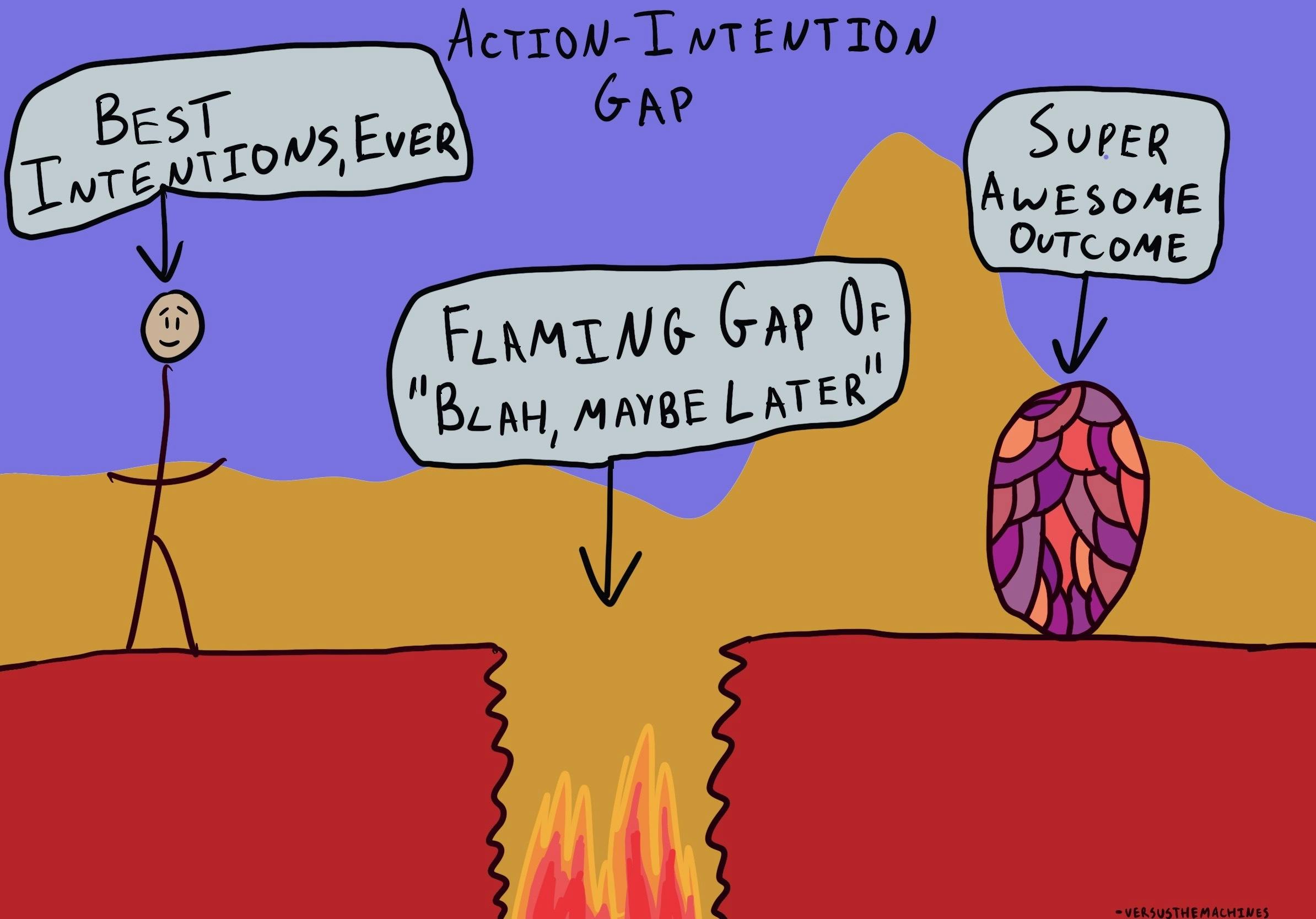Intention-Action Gap
What is the Intention-Action Gap?
The intention-action gap describes the discrepancy between our intentions, or what we plan to achieve, and our actual actions, or what we ultimately do. This occurs because we are naturally inclined toward immediate gratification, which can lead us to prioritize short-term rewards, regardless of our underlying attitudes, beliefs, and values.

The Basic Idea
“My New Year’s resolution will be to exercise for 30 minutes a day, four times a week,” you think to yourself, eating holiday cookies on the couch and watching Love, Actually. Alas, December rolls around and you haven’t met the goal you set for yourself. Months pass, and you set a similar resolution the following January. Most people have experienced a similar cycle: setting an intention and not following through.
This intention-action gap, also known as the value-action gap or knowledge-attitudes-practice gap, occurs when one’s values, attitudes, or intentions don’t match their actions.1 Sometimes, the gap results from behavioral bias favoring immediate gratification. We may know that getting into a fitness routine will have long-term benefits, but watching the next episode of our favorite TV show is more gratifying in the moment. Alternatively, the intention-action gap can result from being too ambitious. We often intend to choose the “right” option, but something about our environment or the action itself can stop us from carrying it out.
Read more: Moving the Mental Goalposts: Why Aiming for the “Best” Isn’t Always the Best Strategy
One day you will wake up and there won’t be any more time to do the things you’ve always wanted. Do it now.
– Paulo Coelho, author ofThe Alchemist
About the Authors
Dan Pilat
Dan is a Co-Founder and Managing Director at The Decision Lab. He is a bestselling author of Intention - a book he wrote with Wiley on the mindful application of behavioral science in organizations. Dan has a background in organizational decision making, with a BComm in Decision & Information Systems from McGill University. He has worked on enterprise-level behavioral architecture at TD Securities and BMO Capital Markets, where he advised management on the implementation of systems processing billions of dollars per week. Driven by an appetite for the latest in technology, Dan created a course on business intelligence and lectured at McGill University, and has applied behavioral science to topics such as augmented and virtual reality.
Dr. Sekoul Krastev
Dr. Sekoul Krastev is a decision scientist and Co-Founder of The Decision Lab, one of the world's leading behavioral science consultancies. His team works with large organizations—Fortune 500 companies, governments, foundations and supernationals—to apply behavioral science and decision theory for social good. He holds a PhD in neuroscience from McGill University and is currently a visiting scholar at NYU. His work has been featured in academic journals as well as in The New York Times, Forbes, and Bloomberg. He is also the author of Intention (Wiley, 2024), a bestselling book on the science of human agency. Before founding The Decision Lab, he worked at the Boston Consulting Group and Google.




















